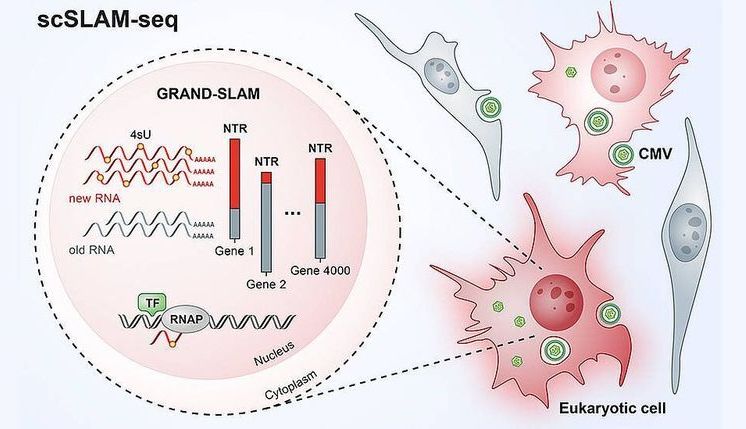Each cell works differently.
When viruses enter the body, such as during an influenza or a gastrointestinal infection, the processes within the infected cells change: In the worst case, the virus takes the helm and reprograms the cell to its advantage. It then produces viral components on a massive scale allowing the intruder to multiply exponentially.
In other cells, however, the virus may be successfully eliminated by the activation of cellular defense mechanisms. But how can it be that one cell is overrun and another succeeds in getting the virus under control? How quickly do individual cells react to a viral attack and which protective genes are activated?
Scientists at the Julius Maximilian University of Würzburg and the Helmholtz Institute for RNA-based Infection Research (HIRI) in Würzburg have investigated these questions. They have developed a new method, scSLAM-seq, which enables them to track the activity of thousands of genes in individual cells over several hours. For the first time, the researchers were able to explain why some cells are successfully infected by a virus, whereas others are not. In addition, they also gained fundamental new insights into the regulation of genes. Their results are published in the July, 18th issue of the scientific journal Nature.
